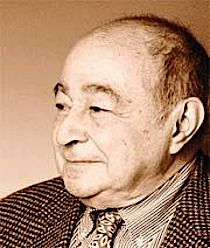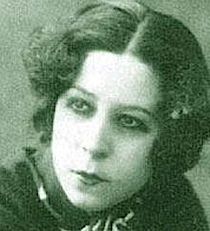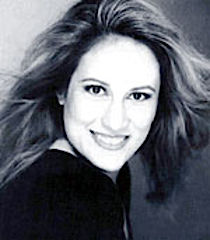III. Further Prospectives
1. Cultural Relations between the Ottoman Empire and the Habsburg States
2. Turkish Opera and Opera in Turkey
3. Female Grandeur and Operatic Performance
The results and the outcome of the first year of this on-going research are already presented at the Vienna symposium on 25-26 April 2008, and will be published in Fall 2008 in the coming volume of the Don Juan Archiv Wien featuring the 2008 symposia proceedings. The research is prospected to conclude by the beginning of 2010 with a forthcoming volume again to be published by the Don Juan Archiv Wien.
As part of the long-termed themes of the Don Juan Archiv research fields, the four spotlights "opera", "Turkey", "Ottoman" and "Habsburg" yield to future research interests, which are formulated as follows:
1. Cultural Relations between the Ottoman Empire and the Habsburg States
Background: It is not merely all about coffee, croissant and the Second Siege of Vienna. The mostly controversial rapport of the two empires that is often full of conflicts also do cover many decades of cultural exchange, fundamentally through diplomacy; thus through their envoys and ambassadors.
Fact: Metin And's research in the journal The Levant Herald (Issue 1st November 1869) proves that in the year 1868, Austro-Hungarian Emperor Franz Joseph I (r. 1848-1916), on his visit to the Ottoman Empire, went to Naum Theatre and watched a performance for half an hour. He was accompanied by Baron Prokesch von Osten (1795-1876), the renowned Austrian internuntius and ambassador in Konstantiniyye between the years 1856-1872.
Research Theme: Staging Turkishness: Ottomans and Turkishness on the Habsburg Theatre and Opera Stages in the eighteenth century in context of Cultural-Diplomatic Relations.
2. Turkish Opera and Opera in Turkey
Background: Although sounding alike, these two phrases above differ entirely from each other. When speaking of opera in Turkey, we speak of opera as it started in the Ottoman times, as the research suggests. Whereas when speaking of the Turkish opera, we refer to the authentic Turkish opera; the opera purely "Made in Turkey", as institutionalized with the founding of the Turkish Republic (1923) and originated on commission of Mustafa Kemal Atatürk.
Fact: The first Turkish opera work Özsoy is composed on commission of Atatürk by Turkish composer and ethnomusicologist Ahmet Adnan Saygun (1907-1991) who belongs to the Turkish Five, the five pioneers of classical music in Turkey. The libretto is by Münir Hayri Egeli (1904-1970). It premiered in Ankara in Halkevi (Volkshaus) on 19th June 1934, before the presences of Atatürk and Riza Sah Pehlevi, on the occasion of the state visit of Riza Sah Pehlevi, the Sah of Iran. Özsoy is a three-act opera, with twelve scenes.
Research Theme: A Critical History of Opera in Turkey with a Portrayal of the principal Turkish opera works.
3. Female Grandeur and Operatic Performance
Background: In the Muslim Ottoman society, it was religiously forbidden for women to appear as actresses on stage. The first female stage performers in the Ottoman society were from among the non-Muslim sections of the society. This convention was also in social practice in the very early years of the Turkish Republic; until the first Turkish female stage performers broke these taboos for rather high costs. This convention also went against the female presence in operatic performance; and thus is the essence of this research theme: the necessity to look at the female side of opera in Turkey; a country that raised highly impressive voices for her opera stage.
Fact: The first Muslim female actress to appear on stage was Afife Jale (1902-1941), who made her debut as late as 1920. The first Turkish female opera singer was Semiha Berksoy (1910-2004), who was also a painter, and an internationally acclaimed artist of interdisciplinary quality. After her first public recital in Istanbul (1929) where she sang Chanson Endu from Rimsky-Korsakov's Sadko (1895-1896) and Mussetta's Aria from Puccini's La Bohème (1896) with the accompaniment of "Turkish Five" composer Cemal Reşit Rey (1904-1985), she made her debut as Ayşim in Özsoy in 1934. She was also the first Turkish female opera singer to sing in Europe (Berlin, 1939, as Ariadne in Ariadne auf Naxos- R. Strauss), and in this way perhaps the role model for Leyla Gencer (1928-2008) a.k.a. La Diva Turca, who would build up her "queendom" through a glorious international career in Milan's Teatro alla Scala as of the Fifties . La Gencer's Austrian debut was 1957 in Vienna, at the Wiener Staatsoper on 17th and 20th June with Verdi's La Traviata as Violetta under Herbert von Karajan. Second time in Vienna was in 1961 on 7th April with Puccini's Tosca as Tosca under Berislav Klobucar. Then in 1961 in the Salzburger Festspiele she performed on the dates of 9th, 15th, 24th, 29th August with Verdi's Simon Boccanegra as Maria Boccanegra under Gianandrea Gavazzeni. Her last stage appearance in Austria was in 1962, again in Wiener Staatsoper. On 15th November she sang Verdi's Don Carlo as Elisabetta di Valois, and on 20th November Un Ballo in Maschera as Amelia.
A Pearl on Turkish Opera Stage after La Gencer
Zehra Yıldız (1956-1997): the late Turkish soprano Zehra Yıldız certainly deserves to be mentioned in this section, for her outstanding career, and also for her unfortunate and untimely loss at the age of 41. Her first debut was in 1982 with J. Strauss II's Eine Nacht in Venedig (Berlin 1883) as Barbara in the Istanbul State Opera and Ballet, and her final stage appearance was with Beethoven's Fidelio as Leonore in Heidelberg Opera on 9th December 1997, only three days prior to her death on 12th December.
Research Theme: The First Female Opera Singers in Turkey: A History of Female Presence in Opera in Turkey/Turkish Opera and Its Reception.
The Case Continues: Saadet Ikesus Altan (1916-2007), Belkis Aran and Suna Korad (1935-2003)
(In Bearbeitung)
Project-coordinator and Website texts: Suna Suner
[Don Juan]
["Fuerza al Turco"]





